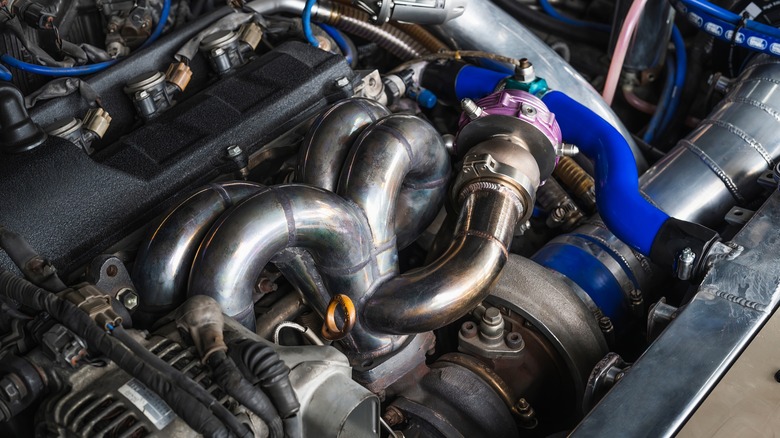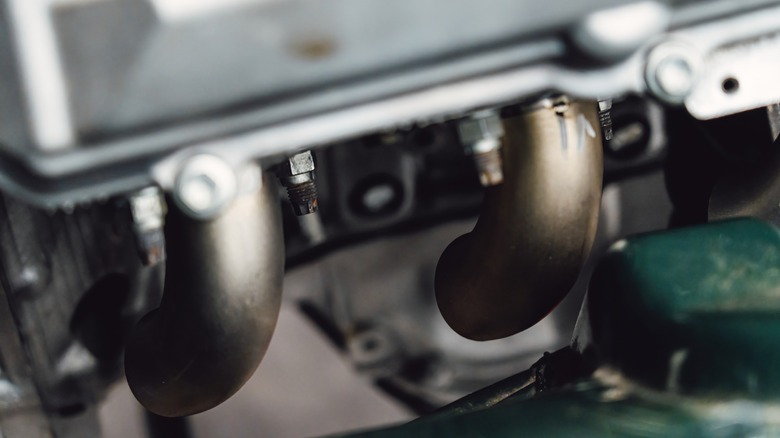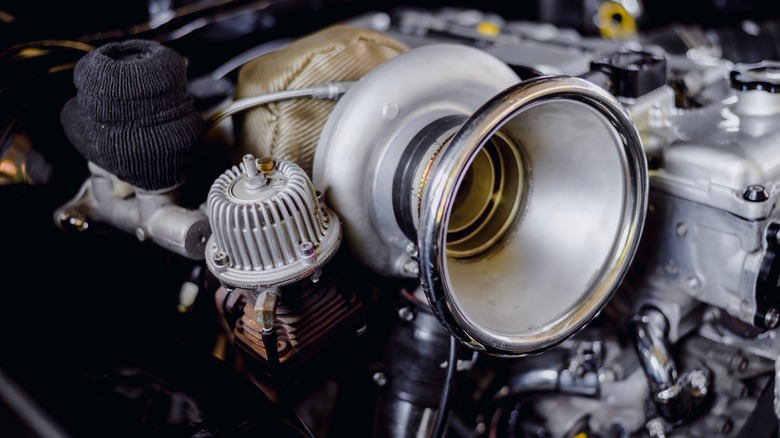What Is A Turbo Wastegate & How Do They Work?
Gearheads who want their car to go faster need more horsepower, and that can be achieved with a turbocharged engine. Turbochargers are installed to produce more power by increasing the density of the air that goes into the engine's cylinders. This burns more fuel, creating more power. Turbocharged engines come with a variety of components that ensure this extra horsepower doesn't come at a cost since this modification can stress the engine and its parts. One of those key components is the wastegate, which controls the amount of exhaust gas going into the turbocharger — and the amount of boost it makes.
There are two types of wastegates: Internal and external. Both ensure exhaust gas bypasses the turbocharger and control the boost level to protect the engine and the turbocharger from damage. An internal wastegate is most common, found right ahead of the turbocharger's turbine wheel. The internal wastegate's valve opens and vents some of the produced exhaust gas when the intake charge reaches a specific PSI. The result? Your car is kept safe while driving faster.
How does a wastegate work?
A wastegate is a pretty simple valve but has a big role in keeping the engine safe and working properly when a turbocharger is installed. But how does it specifically work?
The wastegate has a spring inside the wastegate actuator that holds the valve closed. This spring is rated for a certain pressure. There is also a pressure actuator linked to the turbo's boost pressure that controls the wastegate.
Here's what happens once you start revving your engine and racing down the track: The turbo will spin faster and faster, creating more boost. The wastegate kicks into action once the boost pressure exceeds a preset maximum. When that limit is reached, the wastegate opens after the spring inside it compresses. This allows exhaust gases to bypass the turbine, regulating the turbocharger's revolutions per minute. This ensures that it cannot cause more boost pressure than the spring pressure.
Is an internal or external wastegate better?
Internal and external wastegates both have their benefits and drawbacks. Most turbochargers are fitted with internal wastegates that are built into the turbine housing and controlled by an actuator that's linked to boost pressure. Higher-power engines in race vehicles often have a turbocharger with an external wastegate fitted to the exhaust manifold or header. This type has higher-pressure springs and handles higher boost pressures.
The internal and external wastegates are not better or worse than each other. It's more about picking the one that's right for your car, which requires you to match it to the turbo being produced. Internal wastegates are compact and simple, making them reliable and versatile for lower boost pressures. They are also more cost-effective but are slower to respond to changing boost pressures and can damage the engine if your car's engine overboosts.
External wastegates have larger valves and respond quicker, making their boost control more even. They also have multiple valves for added flow as well as better heat control. The downside is their larger size, requiring additional fabrication and components to properly integrate them. This could be all unnecessary if your car doesn't require it.


